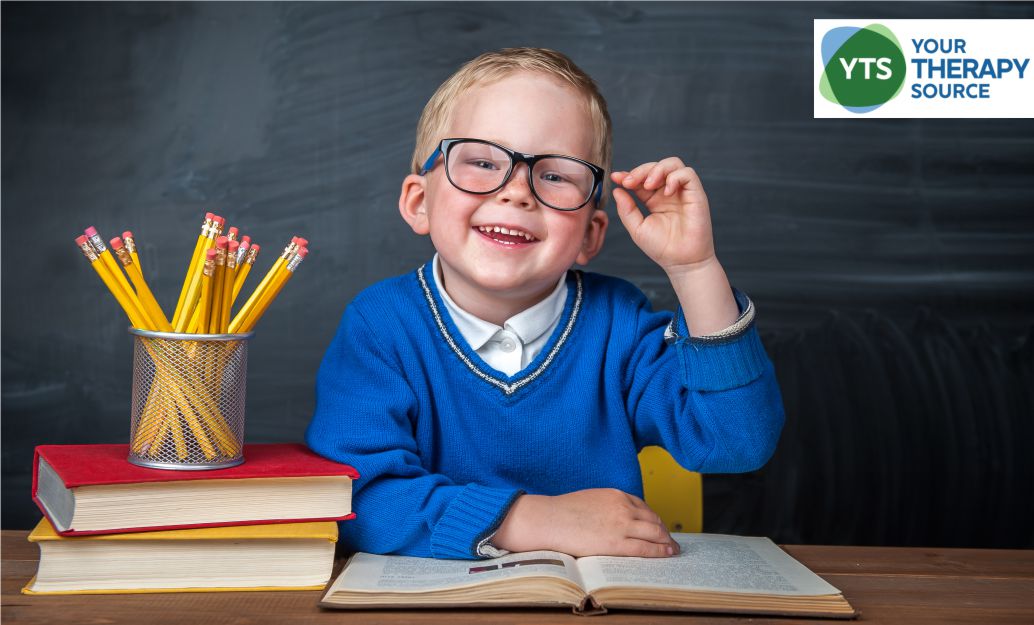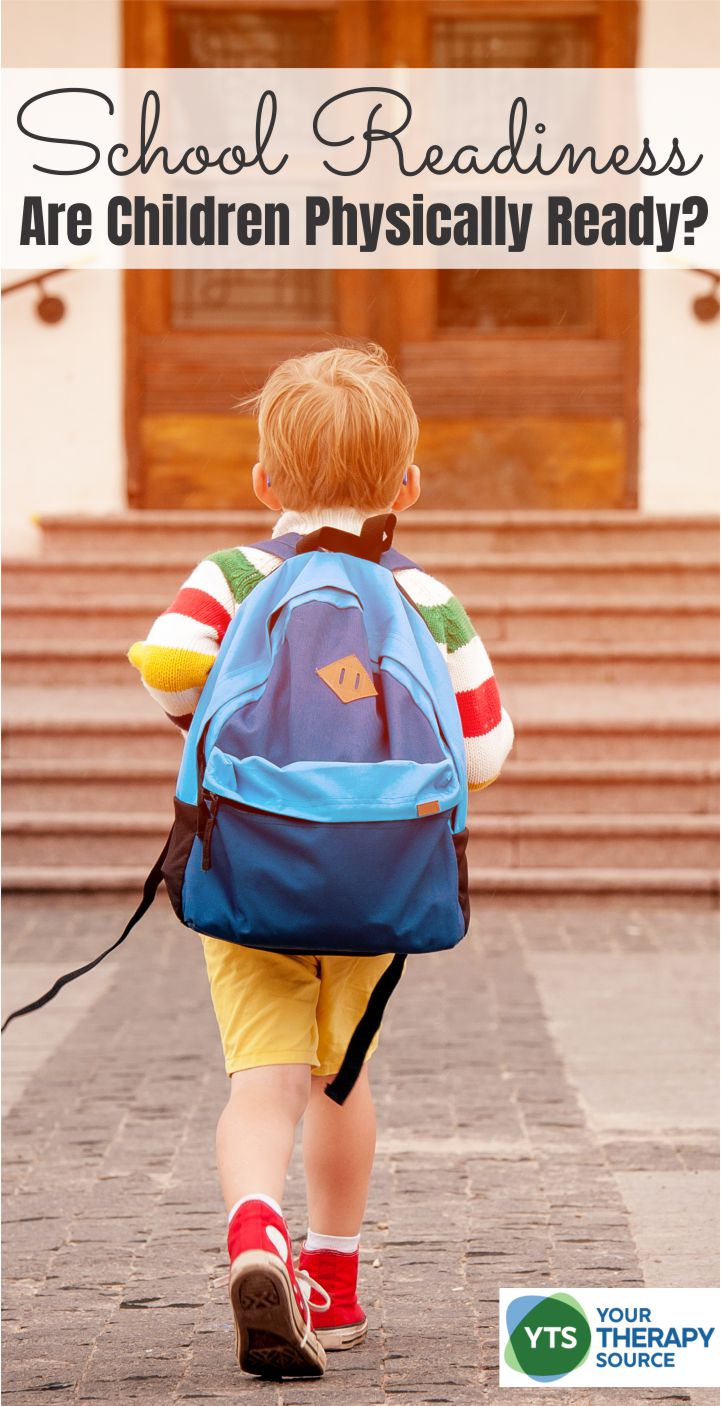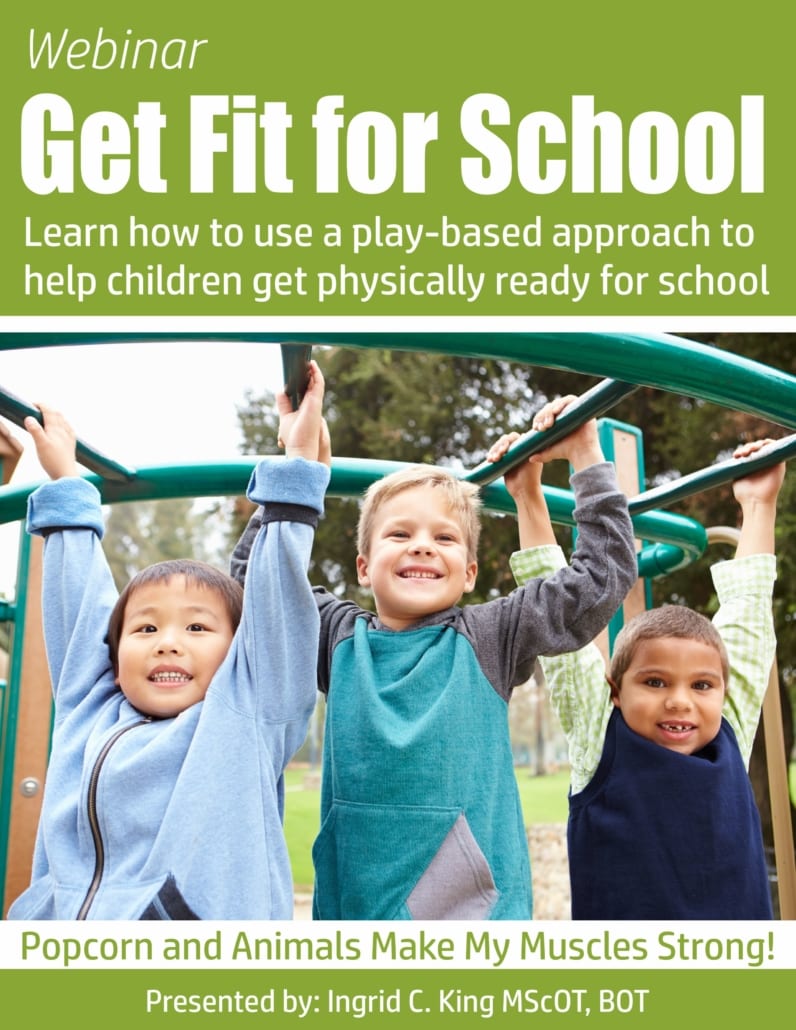School Readiness – Are Children Physically Ready?

Have you noticed a recent decline in children’s functional skills at school? When it comes to school readiness are children physically ready?
A recent study indicated that about 30% of children’s physical development was ‘of concern’ at the start of the school year (21% had significant movement difficulty and another 8% exhibited physical development below age expectancy). Teachers believed that 96% of young children in recent years presented with a decline in physical development at the start school.
Today, the sedentary lifestyle starts at birth with “bucket babies” who move from one piece of baby equipment to another. As children get older, there is an increase in screen time and lack of physical activity. All of this lack of movement leads to a decrease in open-ended, physically active play. This type of play is crucial for children to develop the muscle strength and coordination to complete school tasks such as sitting upright, writing, navigating the school, and participating in physical education class.
What Affects School Readiness?
Many factors affect school readiness. Information on early brain and child development indicate that factors in a child’s early experience can greatly affect that child’s learning trajectory. The factors that influence children’s school success includes social, emotional, cognitive and physical development.
A recent article discussed the benefits of waiting to start kindergarten. The research indicates that by waiting to start school may have academic and social advantages while in kindergarten. Although those advantages can dissipate by middle school. Gender can also influence school readiness.
In terms of physical development, playtime outdoors and indoors is critical. This helps children develop the small muscles in the hands for fine motor skills such as coloring, drawing, and writing. In addition, children develop the larger muscles in the shoulder and core muscles which are necessary to maintain stability in the body while children learn.
When children are able to complete age-appropriate fine and gross motor skills, they are able to more easily sit upright, self-regulate and focus their attention on learning versus controlling their body.
Why Are We Discussing School Readiness Now?
You may wonder why are we discussing school readiness in January? For two reasons:
- in order to prepare children physically for
school they need TIME to build up their muscles and coordination. Therefore they need TIME to play. Starting in September when school starts in the United States will not get them ready. - in other parts of the World (i.e. Australia) school starts in January. Many motor skill activities can be infused throughout the school day. This can help children catch up on their physical development during the early school years.
What Can You Do To Help Children Be Physically Ready for School?
The number one suggestion for school readiness is to start as early as possible (BIRTH). Provide children with safe spaces for open-ended play opportunities that include movement. As children get older, include daily outdoor play (weather dependent) for gross motor skill development and physical activity.
Children are best able to build strength and coordination through spontaneous and unstructured play. Movement and exposure to nature are two CRITICAL factors needed for healthy child development.
Young children need to spend two to three hours each day in active play. This allows children to receive adequate sensory stimulation for the development of their vestibular, proprioceptive and tactile systems. When less time is available due to an increase in screen time or a sedentary lifestyle, children can struggle to physically cope with the demands of the school day.

What to Do If You Suspect a Child is Not Physically Ready for School?
When children are not physically ready for school it can be hard to spot right away. Sometimes, you may notice they are squirming excessively, fidgeting, impulsive, tired, etc. Other times they may move quickly and be unable to control their movements. These subtle or not so subtle signs can be difficult to interpret.
Identification can be particularly challenging in the unstructured play environments in an early childhood setting. Children may be avoiding things they find difficult.
Valuable play opportunities to focus on required skills are lost. Without well-trained eyes, these children may slip through the cracks at an age where they can make the most improvements. Between four and six years of
Create Opportunities for Exercise Play
Be sure to create opportunities for exercise play. Children need to move and they need to move and practice these skills over and over again. Muscle strength improves with repetition from playing for extended periods of time. Provide time for open-ended play where children are climbing, riding, running and jumping.

Activities that target the core muscles in the shoulders and trunk are highly beneficial. Examples of these types of activities are animal walks, swimming, and tug of war.
Occupational and Physical Therapists who work with children are ideally suited to help children who may be at risk. They can identify concerns early and provide interventions for under developed motor skills.
Once children improve their core and upper body strength, they find being active indoors and outdoors easier and more enjoyable. Their gross motor skills and endurance improve increasing motivational levels and tolerance for active play. Not to mention, the improvements in the ability to sit upright and pay attention. This helps children to develop the foundational skills for drawing, writing, cutting with scissors and various other school tasks that children need to do with their hands and fingers.
Need More Help to Physically Prepare Children for School?
The Get Fit for School webinar entitled “Popcorn and Animals Make My Muscles Strong!” can help educate parents, teachers, and therapists on how we can effectively prepare children physically for success at school!
The instructor, Ingrid C. King MScOT, BOT, developed this webinar to teach you how to use a play-based approach to help children get fit for
Information about this Get Fit for School Webinar–
- includes over 50 creative, therapeutic play-based activities including play ideas with friends.
- developmental approach with a focus on core, upper body, wrist and hand strength using exercise play, vertical play, and finger play activities.
- covers brief anatomy explanations with red flag indicators, plus some therapeutic tips e.g. ‘what to do when a child swaps hands?’
- has interactive components e.g. ‘try this now’, ‘watch this video and do the actions too’ etc.
Therapists, teachers, and parents can learn to help young children with the Get Fit for School webinar because in just 75 minutes it will teach you how to prepare children physically for success at school through a play-based approach! FIND OUT MORE.

Thank you to Ingrid C. King MScOT, BOT for contributing to this article.



